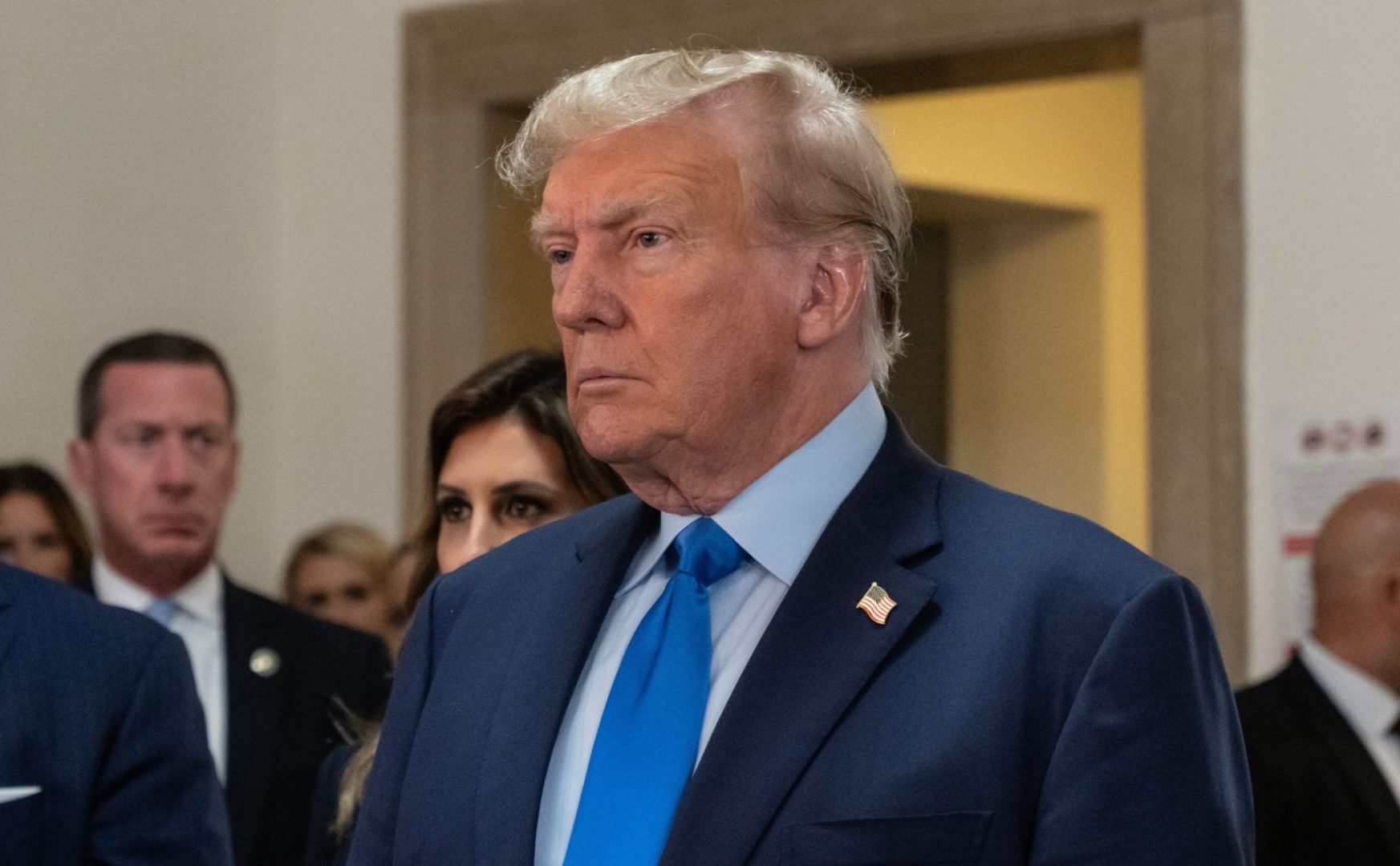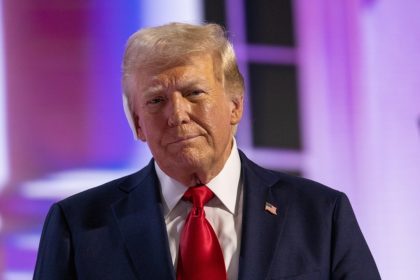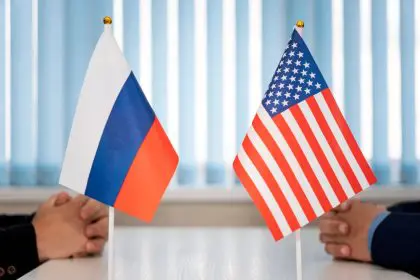President Donald Trump escalated his trade war offensive Monday, delivering stern ultimatum letters to leaders of 14 countries threatening devastating tariffs as high as 40% unless they negotiate more favorable trade deals with the United States by August 1st. The aggressive move marks one of the most sweeping tariff actions of Trump’s presidency, targeting both allies and adversaries across multiple continents.
The dramatic announcement came as Trump extended his original Wednesday deadline for what he calls reciprocal tariffs, giving nations until August 1st to either strike deals or face crushing economic penalties. The president made clear that these new rates could climb even higher if countries dare to retaliate against American goods.
White House Press Secretary Karoline Leavitt held up one of the letters during a briefing, specifically showing correspondence addressed to South Korean President Lee Jae-myung warning of the tariff consequences his country would face. The theatrical display underscored the administration’s determination to reshape global trade relationships through economic pressure.
Japan and South Korea face immediate pressure
The first targets of Trump’s tariff campaign were America’s key Asian allies Japan and South Korea, both receiving letters threatening 25% tariffs on their goods. These penalties represent a significant escalation in trade tensions with nations that have historically maintained strong economic partnerships with the United States.
- Japan’s response: Prime Minister Shigeru Ishiba convened an emergency cabinet task force Tuesday morning, expressing deep regret over the additional tariffs while committing to continued negotiations for a bilateral trade deal benefiting both nations.
- South Korea’s position: President Lee Jae-myung’s government indicated plans for further discussions with the United States, though Seoul warned it would take immediate action if market fluctuations become excessive.
Both countries signaled their intention to engage diplomatically rather than respond with retaliatory measures, potentially avoiding the escalation Trump threatened for nations that fight back against American trade policies.
Expanding tariff reach across continents
Trump‘s tariff offensive quickly expanded beyond Asia, encompassing a diverse array of countries across different regions and economic development levels. The president announced similar letters went to Malaysia, Kazakhstan, South Africa, Myanmar, and Laos, with tariff rates reaching as high as 40% for some nations.
The scope broadened further throughout Monday as Trump posted seven additional letters sent to leaders of Tunisia, Bosnia and Herzegovina, Indonesia, Bangladesh, Serbia, Cambodia, and Thailand. Bosnia and Herzegovina faces a particularly steep 30% tariff rate, while Thailand confronts a 36% penalty on its exports to America.
This rapid-fire delivery of ultimatums demonstrates Trump’s strategy of applying maximum pressure simultaneously across multiple fronts, potentially overwhelming targeted nations’ ability to coordinate responses or seek alternative trading arrangements.
Trade deficit justification drives policy
Trump’s letters consistently emphasized his frustration with trade deficits the United States runs with these nations, meaning America imports more goods from them than it exports in return. The president views these imbalances as evidence of unfair trading relationships that disadvantage American businesses and workers.
The administration argues that these countries have implemented policies that impede American goods from being sold abroad, creating artificial barriers that distort natural trade flows. Trump’s tariff threats aim to pressure these nations into removing such obstacles while encouraging them to manufacture goods within the United States to avoid penalties entirely.
This approach reflects Trump’s broader philosophy that trade relationships should be more balanced and reciprocal, with countries facing consequences for maintaining what he considers unfair advantages over American commerce.
Strategic timing and deadline extension
The August 1st deadline represents a calculated extension from Trump’s original Wednesday target date, providing additional time for negotiations while maintaining pressure on affected countries. The president acknowledged this flexibility when asked about the deadline’s firmness, stating it was firm but not 100% firm if countries wanted to pursue alternative arrangements.
This strategic ambiguity allows Trump to maintain leverage while appearing reasonable to international partners who may need additional time to formulate responses. The extension also provides American businesses more time to prepare for potential supply chain disruptions if negotiations fail.
The timing coincides with the end of a pause on reciprocal tariffs that briefly went into effect in April, during which impacted countries faced a minimum 10% tariff rate. The new threats represent substantial increases from these existing penalties.
Sectoral tariff clarification
Trump’s letters specified that the new tariff rates would be separate from existing sectoral tariffs, meaning they wouldn’t be stacked on top of current penalties like the 25% auto tariff. This clarification addresses potential confusion about how multiple tariff systems would interact and provides some relief to industries already facing specific trade barriers.
The White House confirmed this approach would apply to any future sector-specific tariffs as well, suggesting a systematic method for implementing trade penalties that avoids double-taxation on the same goods through different tariff mechanisms.
This structural approach indicates the administration has developed a comprehensive framework for managing multiple types of trade restrictions simultaneously without creating unintended cumulative effects.
European Union notably absent
Despite Trump’s frequent criticism of European Union trade practices and repeated threats of higher tariffs against the trading bloc, the EU appears to have avoided receiving ultimatum letters in this round of tariff announcements. This absence has drawn attention from European officials and trade observers.
European Commission spokesperson Olof Gill declined to comment on letters they hadn’t received, while Irish Minister for Foreign Affairs and Trade Simon Harris suggested the EU expected an extension of the current status quo until August 1st to allow further negotiations.
The EU’s exclusion from this tariff offensive may reflect ongoing behind-the-scenes negotiations or strategic considerations about timing and leverage in dealing with America’s largest trading partner bloc.
International responses vary by nation
Countries receiving tariff ultimatums have responded with a mixture of diplomatic engagement and economic preparation. Many nations welcomed the deadline extension while expressing eagerness to continue discussions with the United States for better trade arrangements.
Thailand’s Finance Minister Pichai Chunhavajira expressed confidence that Bangkok could negotiate a more competitive tariff rate, noting the country had submitted a proposal to the United States in good faith. Malaysia’s trade ministry similarly indicated plans to continue discussions toward a balanced and mutually beneficial trade agreement.
South Africa’s President Cyril Ramaphosa took a more defiant stance, arguing that the United States had based the 30% tariff rate on an inaccurate representation of trade data while urging local businesses to accelerate diversification efforts away from American markets.
Economic implications and market reactions
The tariff threats carry significant implications for global supply chains, consumer prices, and international economic stability. Companies importing goods from affected countries may face pressure to find alternative suppliers or absorb higher costs, potentially leading to increased prices for American consumers.
Financial markets have responded with cautious attention to the developments, as investors assess the likelihood of successful negotiations versus the implementation of threatened tariffs. Currency fluctuations in affected countries reflect uncertainty about their economic relationships with the United States.
The broad scope of Trump’s tariff offensive suggests a fundamental shift in American trade policy that could reshape global commerce patterns if negotiations fail to produce acceptable agreements by the August deadline.
Negotiation dynamics and leverage
Trump’s approach creates complex negotiation dynamics where multiple countries must simultaneously compete for American attention while potentially cooperating to resist unfavorable terms. The president’s willingness to threaten even higher tariffs for retaliatory actions limits countries’ options for collective response.
The variety of tariff rates across different countries suggests the administration has calibrated its approach based on specific trade relationships, economic vulnerabilities, and strategic importance. This targeted strategy may increase the likelihood of securing favorable bilateral agreements.
Countries face difficult choices between accepting potentially unfavorable trade terms or risking economic disruption through tariff penalties that could damage their export-dependent industries and overall economic growth.
Future implications for global trade
The success or failure of Trump’s tariff campaign will likely influence future American trade policy and international economic relationships. Successful negotiations could encourage similar aggressive approaches with other trading partners, while failures might prompt reconsideration of tariff-based diplomacy.
The international community’s response to these ultimatums will shape perceptions of American leadership and reliability in global economic affairs. Countries may begin seeking alternative trading relationships that provide more stability and predictability than the current American approach offers.
As the August 1st deadline approaches, the world will watch closely to see whether Trump’s tariff threats produce the trade deals he seeks or trigger a broader escalation in global trade tensions that could disrupt international commerce for years to come.















